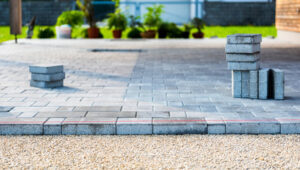You can choose between slabs with a straight or curved surface. Each option has its advantages and disadvantages. Choosing a slab type based on your project’s specifications and budget will help you make the right decision. Concrete Slabs construction begins with the preparation of the foundation and formwork. After this, you must prepare the surface to be covered with concrete. The process of forming a slab may take several days or more, so you should be patient and work on your project as soon as possible.

If you’re building a large structure that will need a flat floor, you can go with a flat slab. A flat slab will offer a more even surface for light to reflect. Flat slabs are typically used in parking decks, hotels, and commercial buildings. Hollow-core ribbed slabs, on the other hand, are called so because they have voids that function as service ducts. These slabs reduce self-weight while maximizing structural efficiency. Another benefit of a hollow core ribbed slab is its environmentally friendly nature.
There are two types of concrete slabs: reinforced and unreinforced. A reinforced flat slab is supported by columns or caps. This type of slab requires little formwork, but loads are transferred to the columns, making it less suitable for large buildings. It is best suited for spans between six to nine meters and live loads of four to seven KN/m2.
A slab with an irregular shape or slope may not be structurally sound. In such cases, a room chajja may be a better option, as it’s not meant to provide a load-bearing loft or structural element. However, it can serve as a stylish built-in shelf in a room. In construction projects, there are 16 different types of concrete slabs. Commercially, flat slabs are the most common type, which is ideal for parking lots and floors with drop columns. Nonetheless, there are several other slab options for residential use.
However, high-mass construction techniques are not without their drawbacks. Concrete slabs that are cast directly on the ground can transmit excessive heat and moisture. This may lead to buckling of carpets and fungi growth. Besides, moisture may damage steel reinforcements within the concrete and cause it to become brittle and crack. A slab can take as long as six weeks to dry completely, so you should make sure you take the proper precautions to protect it during construction.
A ground-bearing slab is reinforced by a steel rebar. Alternatively, you can opt for an unreinforced slab. If you choose an unreinforced slab, you will need to ensure that the steel rebar is installed underneath the surface. The steel rebars will help prevent the slab from deforming under stress, and will also provide additional structural support. The thickness of the slab will determine its strength.
The cost of a concrete slab depends on the size of the slab and the labor needed. The labor involved in concrete slab construction can range from $3,600 to $7,200, depending on the size and grading of the pad. It will also depend on the type of finishing and reinforcement materials chosen. Finally, if you opt to have the concrete pad cast on-site, the price of the slab will be higher. If you choose a precast concrete slab, the cost of a slab can be as low as $4,600.
There are many benefits of precast concrete slabs. For one, they are produced in controlled environments, avoiding environmental variables that can affect the quality of concrete. Furthermore, they are much more cost-effective than traditional slabs. They can be poured in different shapes, sizes and designs, and can be used immediately. Because of this, they are a good choice for almost any construction project. And, of course, they are easy to install.
Whether you need to create a solid one-way slab for a home or business or build a commercial structure, you should be familiar with the ACI-318 code. This code outlines the minimum thickness of one-way solid slabs for buildings that don’t attach to partitions. It also specifies the spacing between two bars, which should be 3 or five times the effective depth of the concrete. You can then calculate the maximum thickness of the slab by following the following rules.
One-way slabs on beams are commonly used in buildings for spans between 3 to 6 meters. They typically have a live load of three to five KN/m2, but they can be used for longer spans. However, if the spans are too long, you should consider adding additional formwork. These slabs are supported by reinforced concrete ribs and rest on columns or girders. In addition, one-way slabs on beams are a good choice for large spans.